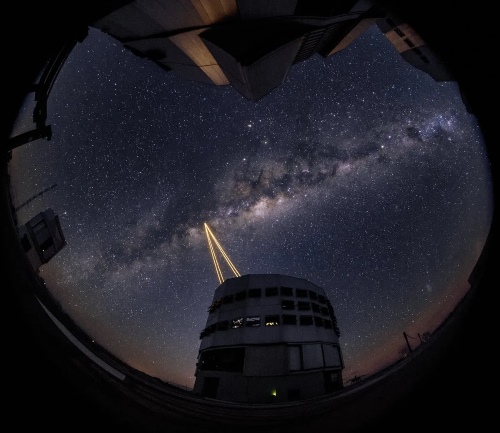In recent developments, astronomers have raised concerns regarding a renewable energy project in Chile that threatens the world's most renowned astronomical observatories.
The location is in Mount Paranal, home to the European Southern Observatory’s (ESO) Very Large Telescope (VLT), one of the most advanced instruments for sky observation.
The planned INNA hydrogen manufacturing project, backed by the U.S.-based AES Energy, could result in light pollution that diminishes the VLT’s observational capabilities.
.jpg)
Source : ESO/Space.com
Where is the location?
Mount Paranal, situated in Chile’s Atacama Desert at an altitude of 8,740 feet (2,664 meters), is considered one of the darkest places on Earth, offering nearly perfect conditions for astronomical research.
What is VLT and why is it Important?
- The Very Large Telescope, worth $350 million (equivalent to $840 million today), is one of the most sensitive instruments for observing the universe.
- It consists of four 8.2-meter-wide telescopes that work together to provide insights into cosmic phenomena, including black holes, exoplanets, and the cosmic web.

Source: ESO/ Space.com
What are the threats?
- AES Energy proposes the INNA hydrogen project, which includes solar and wind farms, a battery storage system, and hydrogen production facilities.
- The development, covering over 3,000 hectares, is expected to cause an increase in sky brightness by 10%. This could severely impact the quality of observations and could make it difficult to study faint galaxies and exoplanet atmospheres.
What is the Impact of Light Pollution?
-
Astronomical Consequences:
- According to Xavier Barcons, Director General of ESO, given statements to Space.com, “An increase in light pollution by 10% could degrade the observation quality at Mount Paranal.”
- This could lead to the loss of details in the observation of the faintest galaxies and exoplanets, compromising the scientific progress achieved through the VLT and future projects like the Extremely Large Telescope (ELT).
-
ELT and Future Prospects:
- The ELT, under construction near Mount Armazones, is set to be the world’s largest visible-light telescope.
- It will feature a 39.3-meter-wide mirror and is expected to expand our understanding of the universe.
- However, the anticipated light pollution from the INNA project could undermine its research capabilities.
What are the Environmental and Economic Considerations of the INNA project?
- Energy Transition vs. Astronomy: The INNA project, valued at $10 billion, promises to produce 217,023 metric tons of green hydrogen annually. While it aligns with global efforts to transition to renewable energy, its proximity to the observatories poses a direct threat to scientific progress. ESO has emphasized the potential for relocating such projects to areas less sensitive to light pollution.
| Note: What is the INNA Project Under Green Hydrogen(H2)?
|

Source: Shutterstock
- Chile's Role in Astronomy: Chile is home to some of the world’s most significant observatories due to its clear skies and remote locations. The country has passed regulations in 2023 to curb light pollution near observatories, yet further measures are needed to safeguard these critical research locations.
In conclusion, the development of renewable energy projects is essential for combating climate change, the unique requirements of scientific research in areas like astronomy must not be overlooked.
The ESO has called for stronger legal protections to preserve the night sky in regions like the Atacama Desert, highlighting the need to balance environmental, scientific, and economic interests.
Comments
All Comments (0)
Join the conversation